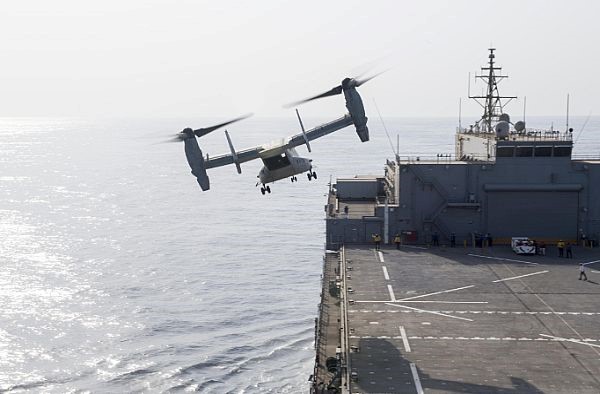Program Summary
 |
|
USS LEWIS B. PULLER (ESB 3) conducting airborne mine countermeasure training operations.
|
The Expeditionary Transfer Dock (ESD) and Expeditionary Sea Base (ESB) ship classes are highly flexible platforms that may be used across a broad range of military operations supporting multiple operational phases. Acting as a mobile sea base, they are part of the critical access infrastructure that supports the deployment of forces and supplies to provide prepositioned equipment and sustainment with flexible distribution.
The ESD and ESB ships were originally called the Mobile Landing Platform (MLP) and the MLP Afloat Forward Staging Base (AFSB), respectively. In September 2015, the Secretary of the Navy re-designated these hulls to conform to traditional three-letter ship designations.
The design of these ships is based on the Alaska class crude oil carrier, which was built by General Dynamics National Steel and Shipbuilding Company (NASSCO). Leveraging commercial designs ensures design stability and lower development costs.
 |
| U.S. 5TH FLEET AREA OF OPERATIONS (Sept. 8, 2017) Marines assigned to the 15th Marine Expeditionary Unit (15th MEU) embarked aboard the amphibious dock landing ship USS Pearl Harbor (LSD 52) perform visit, board, search, and seizure exercises aboard the expeditionary mobile base USS Lewis B. Puller (ESB 3) in support of Alligator Dagger. Alligator Dagger is a dedicated, unilateral combat rehearsal led by Naval Amphibious Force, Task Force 51/5th Marine Expeditionary Brigade, in which combined Navy and Marine Corps units of the America Amphibious Ready Group and embarked 15th Marine Expeditionary Unit are to practice, rehearse and exercise integrated capabilities that are available to U.S. Central Command both afloat and ashore. (U.S. Navy photo by Mass Communication Specialist 2nd Class Kristina Young/Released) |
The USNS Montford Point (T-ESD 1) and USNS John Glenn (T-ESD 2) are configured with the Core Capability Set (CCS), which consists of a vehicle staging area, vehicle transfer ramp, large mooring fenders and up to three Landing Craft Air Cushion (LCAC) vessel lanes to support its core equipment transfer requirements. With a 9,500 nautical mile range at a sustained speed of 15 knots, these approximately 80,000 tons, 785-foot ships leverage float-on/float-off technology and a reconfigurable mission deck to maximize capability. Additionally, the ships’ size allows for 25,000 square feet of vehicle and equipment stowage space and 380,000 gallons of JP-5 fuel storage.
USS Lewis B. Puller (ESB 3), the first ESB delivered, along with follow ships Hershel “Woody” Williams (ESB 4) and Miguel Keith (ESB 5), are being optimized to support a variety of maritime based missions including Special Operations Force (SOF) and Airborne Mine Counter Measures (AMCM). The ESBs include a four spot flight deck, mission deck and hangar, are designed around four core capabilities: aviation facilities, berthing, equipment staging support, and command and control assets.
Montford Point (T-ESD 1), John Glenn (T-ESD 2), and Hershel "Woody" Williams (T-ESB 4) have all delivered to the U.S. Navy and are operated by Military Sealift Command. In August 2017, upon arrival in the U.S. 5th Fleet Area of Responsibility, ESB 3 was re-designated from USNS and commissioned as a USS. As a commissioned Navy ship, USS Lewis B. Puller (ESB 3) is commanded by a Navy O-6 with a permanently embarked military crew. This re-designation provides combatant commanders greater operational flexibility as to how the platform is employed in accordance with the laws of armed conflict.
Updated Jan 2019